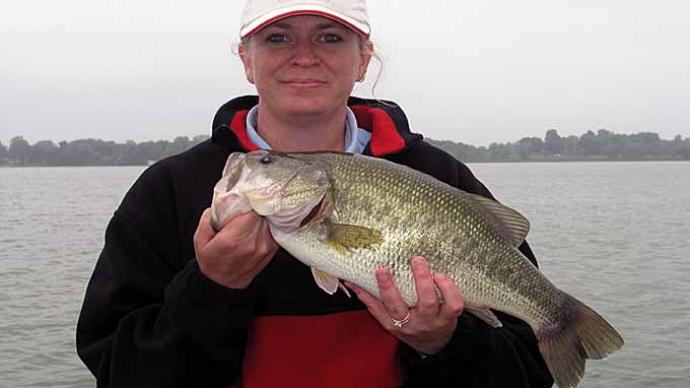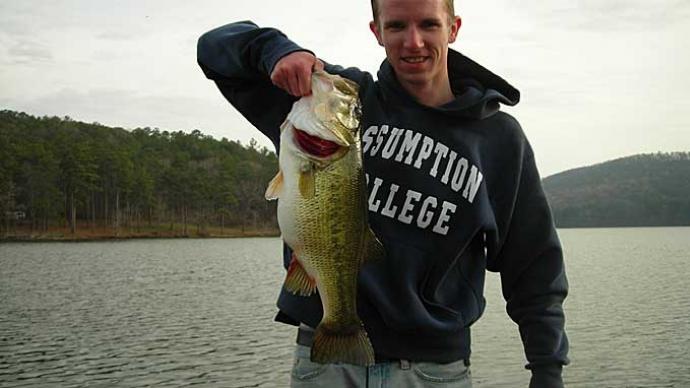
With the arrival of spring most big bass have migrated to shallow water. The time to catch Mrs. Big is now. Some days, you can just let down your trolling motor at the boat ramp and start fishing with just about anything you select from your tackle box and catch some wall-hangers. You can fish the same area the next day and not get a bite. That is springtime bass fishing. Different areas will be hot one day and completely shut off the next. You wonder where the heck are the bass?
They are still there, but they have other things on their mind. Either they started their spawning ritual in the area you are fishing, or a spring cold front pushed them back to deeper water.
To consistently catch fish in spring you must be mobile. Be ready to relocate fishing areas daily and cover a lot of water. When you connect with a big 'un, stay in the area and fish it thoroughly. Big bass are normally loners, however, there will often be numbers of big bass in prime staging areas and spawning locations.
In early spring start fishing the upper (shallow) end of the lake and as the month proceeds work toward the dam. Prime locations to look for will have deep water near shallow, and an abundance of structure, such as wood or grass with contour lines running parallel to shallow water. Also, look for areas that are protected from prevailing winds. Most big bass will set up their core area in eight to fifteen feet of water near their selected spawning area and move to shallow edges or contour breaks to spawn.
Sometimes before spawning big females cruise shallow water to feed looking for males on nests to select the right partner, but they will not stray far from deep water. Most big bass will select a nest site on the edge of break lines in four to six feet of water near cover, such as wood and grass. Some big females will spawn in treetops in the middle of the lake, but this is not common. Water must be shallow enough for sunlight to penetrate the nesting area. In areas that generally stay off-colored or muddy, big bass will spawn in very shallow water (one to three feet). In clear water larger females will spawn four to eight feet.
When big female bass move to their nesting site to spawn, feeding is not on their mind so they are very hard to catch once on the nest. The best time to catch a big female is before they make their move to spawn and after the spawn.
Concentrate your fishing time in staging areas in eight to 15 feet of water on contour lines near spawning areas. When big females move up to spawn, relocate your fishing to an area where they have not moved onto the nest. Sight fishing for nesting bass can be a lot of fun, but if you are after a trophy, stay on the break lines. You will greatly increase your odds.
During spring months, bass will bite a large variety of small and large lures. When covering a lot of water the Terminator spinnerbait is hard to beat. With a large selection and easily changeable skirts on the titanium snapback frame that always snaps back to its original form, they catch big fish and last a long time. When you plan to fish an area slowly and thoroughly, jigs with big plastic trailers, pork chunks, or craws are the best choice. Some large bass are also caught during spring on soft jerkbaits.
There are a lot of good soft jerkbaits on the market. Jawtec's KO Shad is my favorite. It has produced lots of big bass for my clients and I know it will do the same this spring.
When you catch your trophy bass or any bass, please practice catch and release. Nowadays replica mounts are better than skin mounts. They definitely will last longer. All you need for a replica is your fish weight and length. The girth measurement is not necessary. The taxidermist will determine the girth by the length and weight. A photo of your trophy will help the taxidermist replicate the exact color and special markings. Jason and Clayton Pierce of Lake Fork Taxidermy (903-765-9999) have won many national shows, and I highly recommend them to all my clients and friends.




